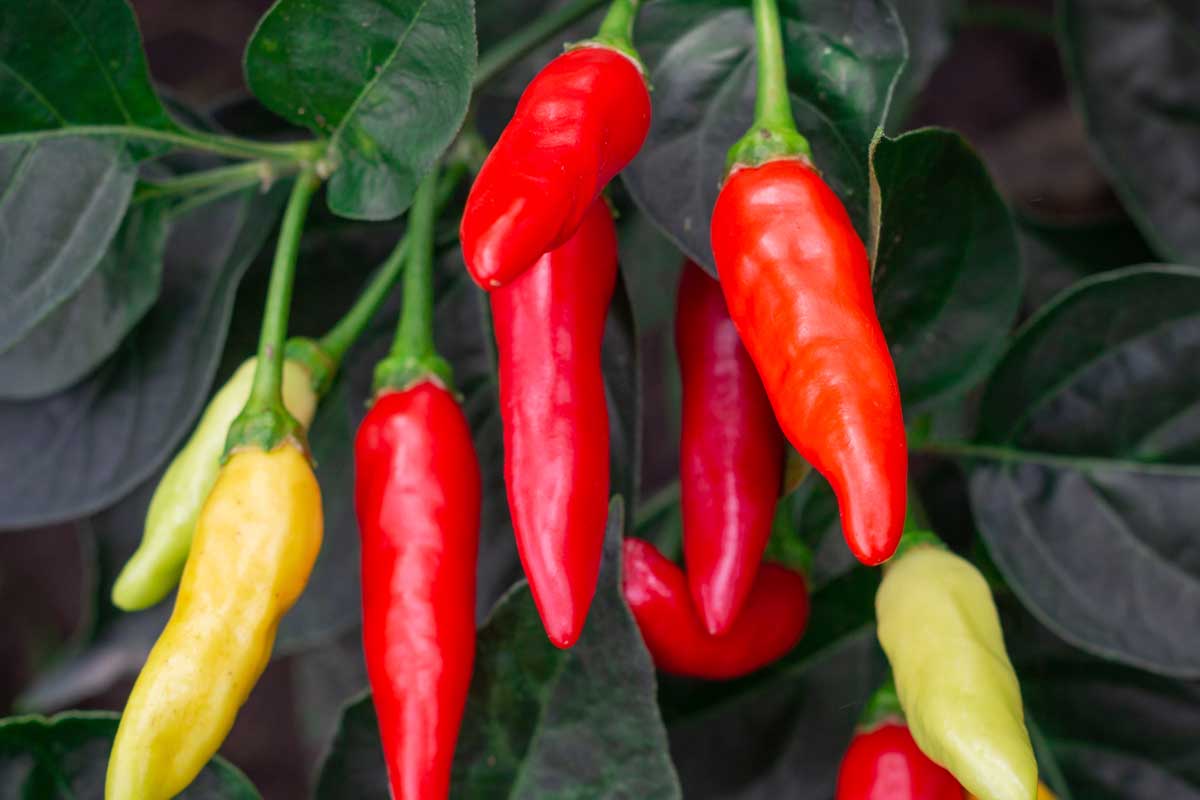
Tabasco peppers are more than just a spicy kick for your favorite dishes. Originating from Mexico, these fiery little peppers pack a punch both in flavor and history. Did you know that Tabasco sauce, made from these peppers, has been a staple since 1868? It's not just about the heat; these peppers have a unique tangy taste that sets them apart. Grown primarily in Louisiana, the peppers thrive in warm climates. They start green and turn a vibrant red when ripe. Whether you're a spice lover or just curious, there's a lot to learn about these fascinating peppers. Ready to dive into 25 intriguing facts? Let's get started!
Key Takeaways:
- Tabasco peppers are small, fiery chili peppers originating from Tabasco, Mexico. They turn bright red when ripe, measure 30,000-50,000 on the Scoville scale, and thrive in warm, humid climates with full sunlight.
- These spicy peppers are not just for making hot sauce. They can be pickled, added to salsas, used in marinades, and offer health benefits like boosting the immune system and speeding up metabolism.
What is a Tabasco Pepper?
Tabasco peppers are small, fiery chili peppers known for their role in making the famous Tabasco sauce. These peppers pack a punch and have a rich history. Let's dive into some fascinating facts about them.
-
Origin: Tabasco peppers originated in the Mexican state of Tabasco.
-
Scoville Heat Units: They measure between 30,000 and 50,000 on the Scoville scale, making them quite hot.
-
Color Change: These peppers start green and turn bright red when fully ripe.
-
Size: Typically, they grow to about 1.5 to 2 inches long.
-
Shape: They have a distinctive tapered shape, often compared to a small bullet.
Growing Conditions
Tabasco peppers thrive in specific conditions. Knowing these can help you grow your own spicy delights.
-
Climate: They prefer warm, humid climates.
-
Soil: Well-drained, sandy soil is ideal for their growth.
-
Sunlight: Full sunlight is necessary for optimal growth.
-
Watering: Consistent watering is crucial, but avoid waterlogging.
-
Harvest Time: They are usually ready for harvest about 80 days after planting.
Culinary Uses
Tabasco peppers are not just for hot sauce. They have various culinary applications.
-
Hot Sauce: The most famous use is in Tabasco sauce, a staple in many kitchens.
-
Pickling: They can be pickled for a tangy, spicy treat.
-
Salsas: Adding them to salsas gives a fiery kick.
-
Marinades: They make excellent additions to marinades for meats.
-
Spicy Dishes: Use them in any dish that needs a heat boost.
Health Benefits
These peppers are not just about heat; they offer several health benefits too.
-
Vitamin C: High in vitamin C, they boost the immune system.
-
Capsaicin: Contains capsaicin, which has anti-inflammatory properties.
-
Metabolism: Eating them can help speed up metabolism.
-
Pain Relief: Capsaicin is also known for its pain-relieving properties.
-
Antioxidants: Rich in antioxidants, they help fight free radicals.
Fun Facts
Here are some quirky and interesting tidbits about Tabasco peppers.
-
Birds Love Them: Birds are unaffected by the heat and love eating these peppers.
-
Seed Spreaders: Birds help spread their seeds, aiding in natural propagation.
-
Tabasco Sauce Aging: The sauce is aged in oak barrels for up to three years.
-
Pepper Mash: Tabasco sauce starts as a pepper mash, which ferments before being mixed with vinegar.
-
Global Reach: Tabasco sauce is sold in over 195 countries and territories worldwide.
Spicing Up Your Knowledge
Tabasco peppers pack a punch in both flavor and history. Originating from Mexico, these fiery little peppers have made their way into kitchens worldwide. They’re not just about heat; they bring a unique tangy taste that’s hard to beat. Whether you’re a fan of the famous Tabasco sauce or enjoy the peppers in other dishes, their versatility is impressive.
Rich in vitamins A and C, they offer health benefits alongside their spicy kick. Plus, their cultivation process, especially on Avery Island, adds an interesting layer to their story. From their Scoville heat units to their role in culinary traditions, Tabasco peppers are more than just a spice.
Next time you reach for that bottle of hot sauce, you’ll appreciate the rich history and effort behind every drop. So, keep exploring and enjoy the fiery journey of Tabasco peppers!
Frequently Asked Questions
Was this page helpful?
Our commitment to delivering trustworthy and engaging content is at the heart of what we do. Each fact on our site is contributed by real users like you, bringing a wealth of diverse insights and information. To ensure the highest standards of accuracy and reliability, our dedicated editors meticulously review each submission. This process guarantees that the facts we share are not only fascinating but also credible. Trust in our commitment to quality and authenticity as you explore and learn with us.


